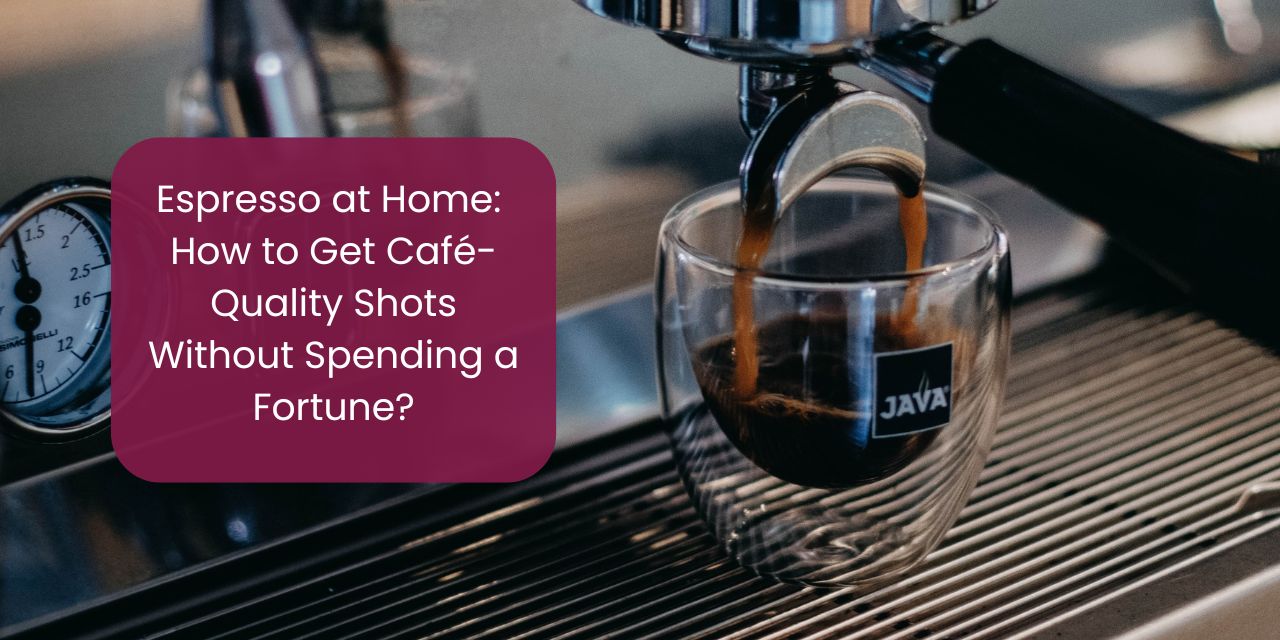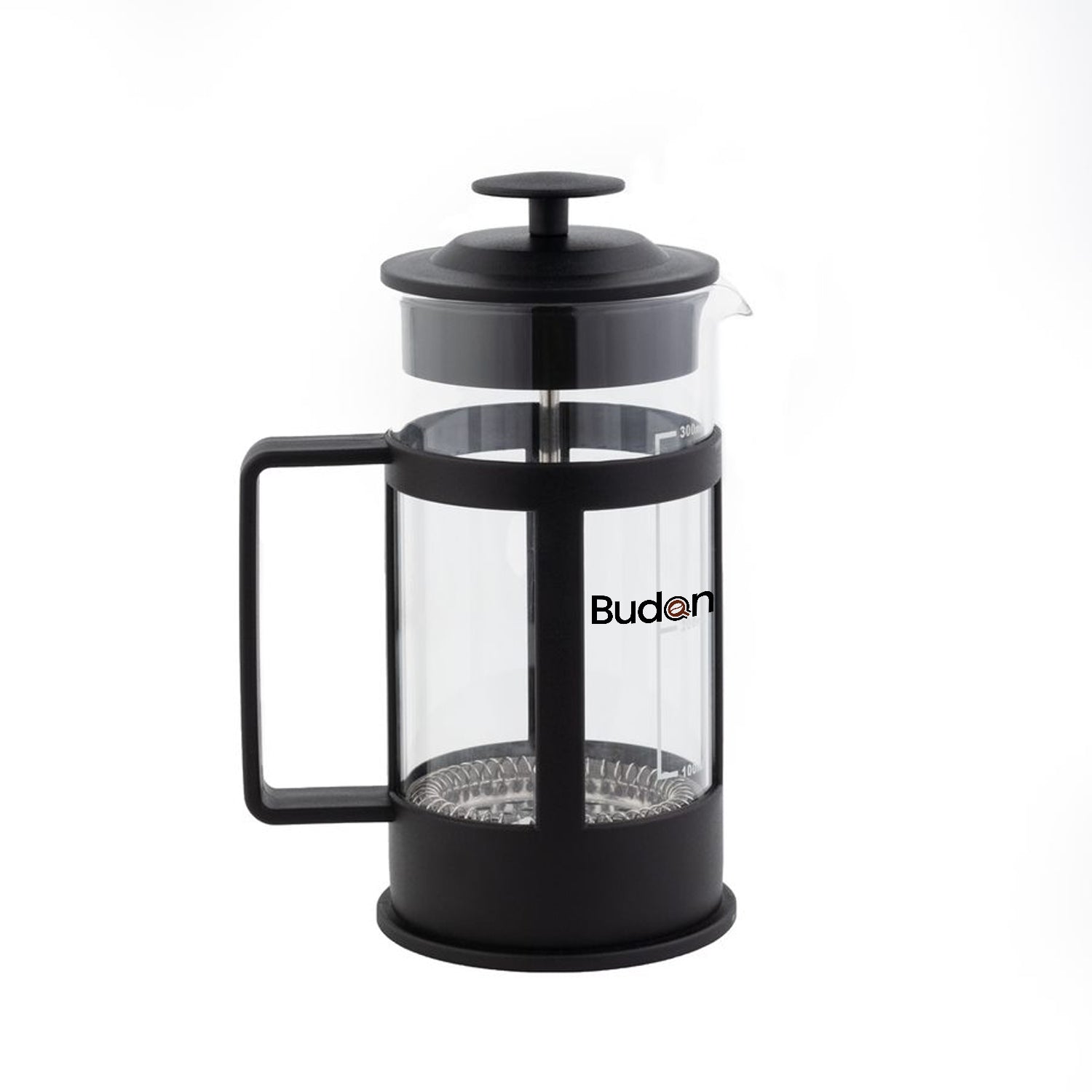Nothing compares to the rich aroma and bold flavor of a freshly pulled espresso shot. For many coffee lovers, a daily trip to the café feels like a must—but those ₹200–₹300 lattes quickly add up. The good news? You can enjoy café-quality espresso at home without draining your wallet.
With the right equipment, technique, and beans, brewing a perfect shot at home is easier and more affordable than you think. In this guide, we’ll cover everything you need to know about making espresso at home, from budget-friendly machines to brewing tips that rival your favorite café.
What Makes a True Espresso?
Before diving into equipment, it’s important to understand what defines espresso:
-
Pressure brewing – A true espresso shot is brewed under 9 bars of pressure, forcing hot water through finely ground coffee.
-
Short extraction time – A shot takes 25–30 seconds to pull.
-
Concentrated flavor – Espresso has a strong, bold taste with a golden crema on top.
Anything less than this is just strong coffee—not authentic espresso.
Why Make Espresso at Home?
-
Save Money in the Long Run
-
A café espresso costs ₹150–₹250 per shot.
-
Brewing at home brings the cost down to ₹15–₹25 per shot, depending on beans.
-
Full Control Over Taste
-
Experiment with different beans, grind sizes, and recipes.
-
Adjust strength, sweetness, and crema to your preference.
-
Convenience
-
Enjoy barista-level coffee without leaving your house.
-
Perfect for early mornings, late-night work sessions, or hosting friends.
Choosing the Right Espresso Machine on a Budget
When people think of espresso machines, they imagine professional setups worth ₹1 lakh or more. But you don’t need to spend that much. Let’s break down budget-friendly options:
1. Manual Espresso Makers (₹5,000 – ₹15,000)
These machines use hand pressure to brew espresso. Examples: Flair Espresso Maker, Wacaco Nanopresso.
-
Pros: Affordable, portable, no electricity needed.
-
Cons: Requires practice, limited consistency.
2. Entry-Level Semi-Automatic Machines (₹20,000 – ₹40,000)
Brands like Budan, Gaggia, and DeLonghi offer budget-friendly semi-automatic models.
-
Pros: True espresso experience, more control.
-
Cons: Slight learning curve.
3. Pod & Capsule Machines (₹8,000 – ₹25,000)
Options like Nespresso deliver convenience and decent espresso.
-
Pros: Quick, mess-free, beginner-friendly.
-
Cons: Pods are expensive long-term, limited customization.
4. Hybrid Machines (₹25,000 – ₹45,000)
Machines like the Budan One Touch allow both pods and fresh ground coffee, offering flexibility.
👉 Tip: If you’re just starting, a semi-automatic espresso machine is the sweet spot for affordability, quality, and upgrade potential.
Don’t Forget the Grinder
Your espresso is only as good as your grind. Pre-ground coffee loses freshness quickly, leading to dull flavors. A burr grinder is essential for consistency.
-
Manual Burr Grinders (₹3,000 – ₹7,000) – Budget-friendly, great for beginners.
-
Electric Burr Grinders (₹8,000 – ₹20,000) – Faster, more consistent, ideal for daily use.
Brands like Timemore, Baratza, and Budan offer reliable options.
The Coffee Beans: Your Foundation for Flavor
Even the best machine can’t save poor-quality beans. For true café-style espresso:
-
Choose Freshly Roasted Beans – Coffee peaks within 2–4 weeks after roasting.
-
Opt for Espresso Roasts – Medium to dark roasts bring out chocolatey, nutty, bold flavors.
-
Experiment with Single-Origin vs. Blends –
-
Blends (like Something’s Brewing’s House Blend) are balanced and versatile.
-
Single-origin beans showcase unique flavors like fruity Ethiopian or earthy Indian coffees.
👉 Budget Tip: Buy whole beans in bulk from trusted roasters instead of small supermarket packs.
The Perfect Espresso Recipe
Here’s a simple home-friendly espresso recipe:
-
Dose: 18g ground coffee (double shot)
-
Yield: 36g espresso (about 60ml)
-
Brew Time: 25–30 seconds
Steps:
-
Grind beans fine (like table salt).
-
Tamp evenly with firm pressure.
-
Start extraction immediately.
-
Stop at 25–30 seconds for best flavor.
-
Look for golden crema as a sign of success.
Budget-Friendly Alternatives if You Can’t Buy a Machine
Not ready to invest in an espresso machine? You can still enjoy strong, espresso-like coffee at home:
-
Moka Pot (₹2,000 – ₹5,000) – Stovetop espresso maker that produces bold coffee.
-
AeroPress (₹4,000 – ₹6,000) – Makes concentrated coffee, close to espresso.
-
French Press Hack – Use extra-fine grind and shorter steep time for a stronger brew.
While these aren’t true espresso, they’re excellent budget alternatives.
Accessories That Make a Difference
You don’t need every gadget, but a few affordable accessories will elevate your espresso game:
-
Tamper – Ensures even extraction (₹500 – ₹2,000).
-
Milk Frother – For cappuccinos and lattes (₹2,000 – ₹5,000).
-
Digital Scale – Helps with consistency in dose and yield (₹1,500 – ₹3,000).
-
Knock Box – Convenient disposal of used coffee pucks (₹1,000 – ₹2,500).
Common Mistakes to Avoid
-
Using Stale Coffee – Always buy fresh beans.
-
Wrong Grind Size – Too coarse = sour shot; too fine = bitter shot.
-
Skipping Preheating – Warm up your machine and cup for better extraction.
-
Overpacking the Portafilter – Leads to uneven water flow.
-
Not Cleaning the Machine – Dirty machines ruin flavor and shorten lifespan.
How Much Will It Really Cost?
Let’s do some quick math for a beginner-friendly espresso setup:
-
Entry-Level Semi-Automatic Machine: ₹25,000
-
Manual Grinder: ₹5,000
-
Accessories: ₹5,000
-
Fresh Beans (per month): ₹1,500
Total Initial Investment: ₹35,000
Cost Per Cup at Home: ~₹20 (vs ₹200 at a café)
👉 Within 6 months, your setup pays for itself if you drink espresso daily.
Final Thoughts
You don’t need to be a barista—or spend a fortune—to enjoy café-quality espresso at home. With a smart investment in an entry-level machine, a good grinder, and fresh beans, you can brew espresso that rivals your local café at a fraction of the cost.
Whether you choose a semi-automatic machine, a pod system, or a budget-friendly moka pot, the secret lies in freshness, consistency, and practice. Soon, you’ll not only save money but also take pride in crafting every shot yourself.


























